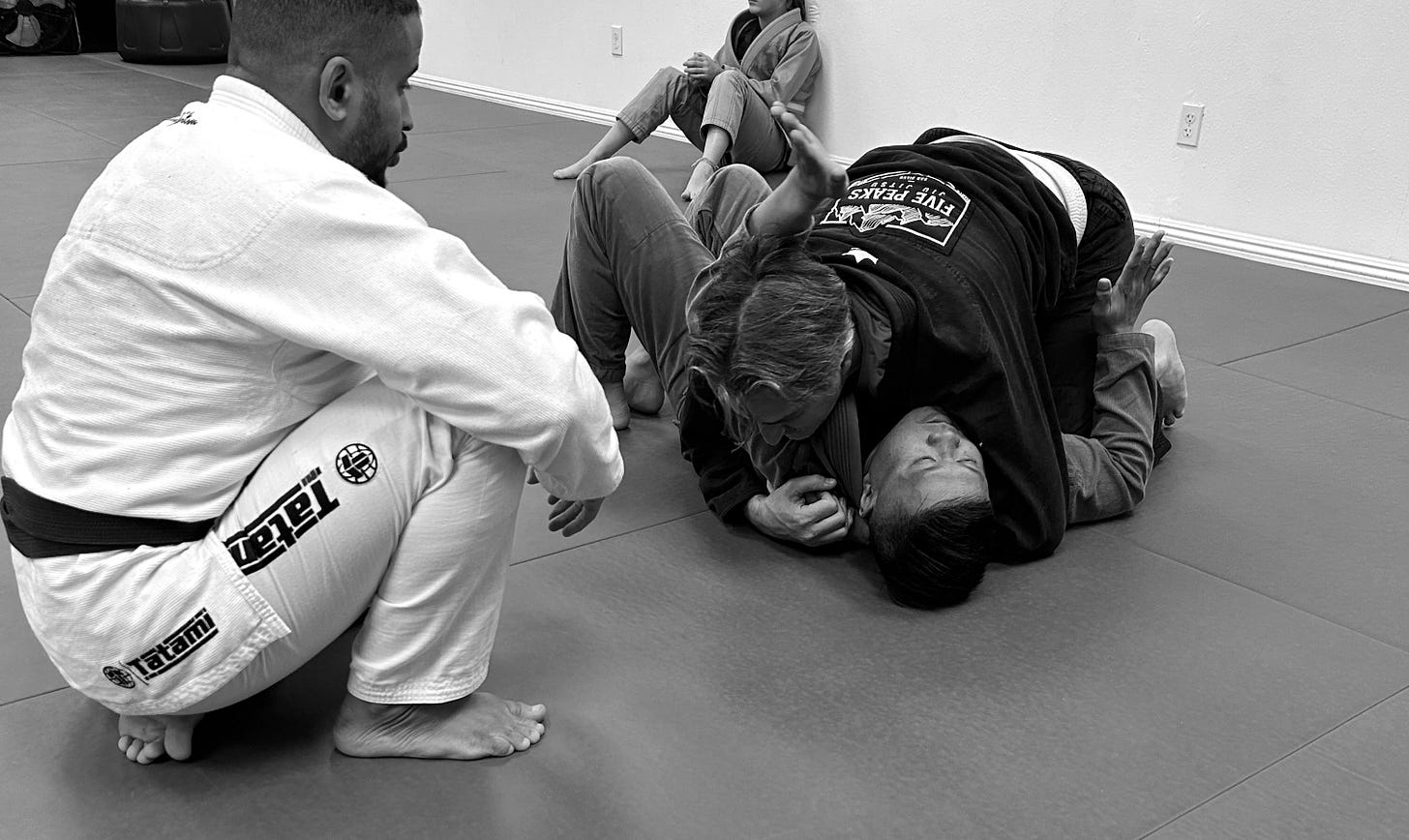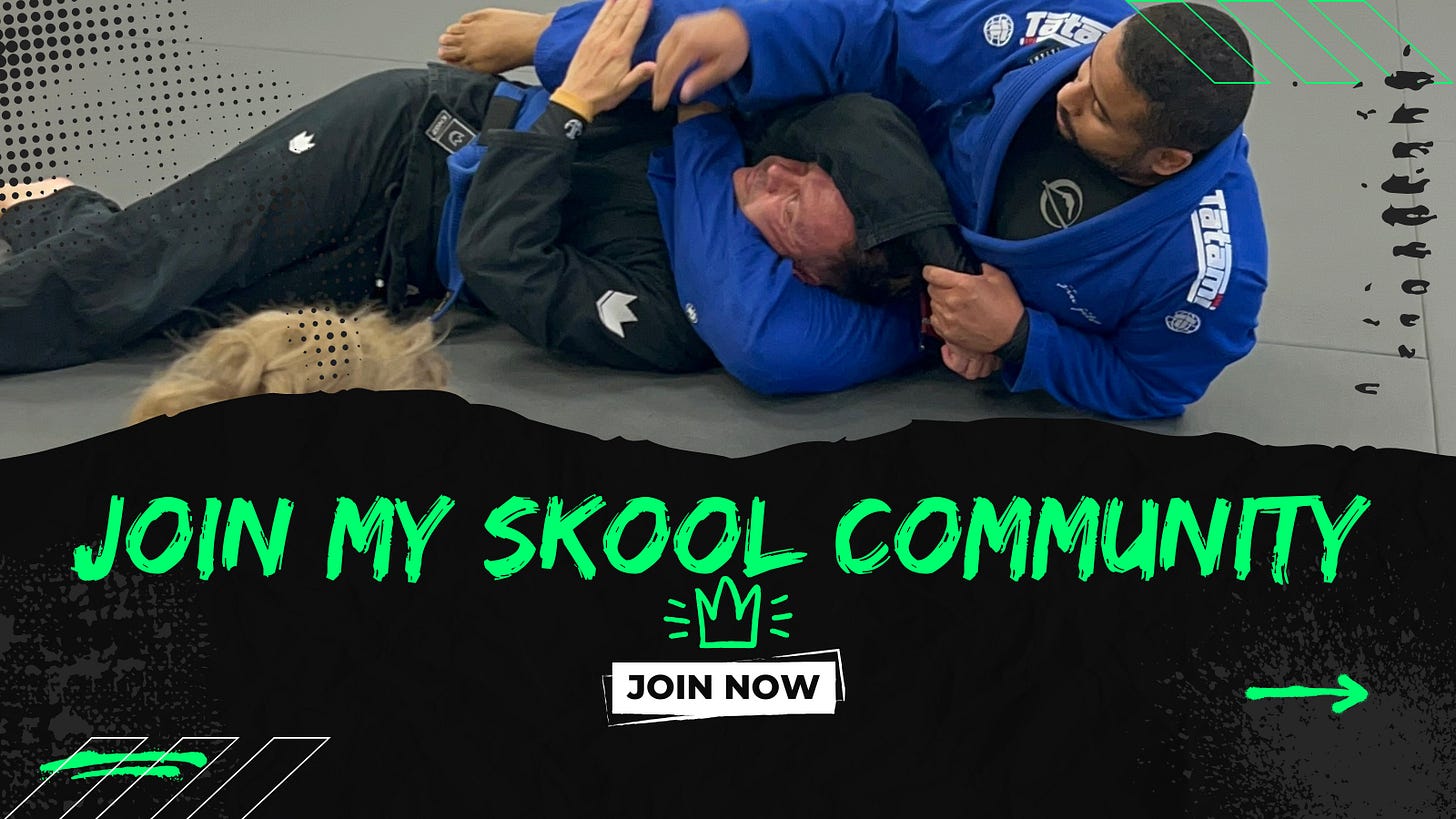Transitional Windows: The Hidden Timing of Great Escapes
Finding Your Escapes In Bjj
Choke Point Chronicles is where strategy meets storytelling. Each post explores the tactics, psychology, and culture of Jiu-Jitsu, written for students and coaches who want to train with intention and think deeper about the art.
Tapped In is a short-form audio series built for grapplers chasing mastery, not medals. Weekly insights blending mindset, structure, and real-talk in just 15-20 minutes.
Upgrade to premium for just $5/month to unlock deeper essays, bonus audio, and behind-the-scenes coaching content.
Transitional Windows: The Hidden Timing of Great Escapes
When I was in the early stages of my journey, I like many people, looked at Jiu-Jitsu in stages. One piece starting then ended, which then allowed for another to start then end.
This approach closes you off to taking advantage of all the in between gray area.
There is no existing rule that says that I have to wait for my opponent to finish before I start my own action. This is not a pleasant conversation, I actually want to be rude. I want to cut you off, interrupt your train of thought, and never let you finish your sentence.
A New Tapped In: A Jiu-Jitsu Podcast Out Now!
E66 | The Aging Grappler: Training Smarter, Not Harder
Chase the Window
There is a naturally occurring window that presents itself when your opponent decides to transition to a new position or a submission.
When we’re in mount for example, every time my opponent tries use their hands or arms to control my head, arms, or collar, I bridge in that direction.
Two key things happen..
If my bridge is effective, I can off balance them enough to pair the bridge with a solid Hip Escape.
Worst case, I keep them busy. Forcing them to have to post their hand on the mat.
Pre-Positioning
This works in concert to the chasing the window approach. For example, when my opponent is passing, there’s a moment when I know that there’s no fending off the attack and I have to make a decision.
I will switch from Guard Retention to establishing my escape before my opponent secures the pinning position.
One of my favorite ways to do this is similar to this Lachlan Giles response to the Weave Pass. Underhooks are a fantastic way to set up escapes.
Creating the Angle
One of the missing details for many practitioners is turning towards their opponent to create the right angle, in order to ease the knee in. While many of us, can make it work with natural hip dexterity, turning to face your belt knot towards your opponent’s does two key things.
Makes it easy to get your knee/shin between you and your opponent.
This habit forces you from being flat on back, even if you can’t complete the escape.
Survive Side Control - Objective and Mechanics
Closing Thoughts
If you can keep these three things in mind any time you’re defending off of your back, you can create the openings you need to escape. Something that I didn’t mention, but will happen as a biproducts, is that if you become one of those practitioners who is hard to hold down, you’ll also be hard to submit.
This community is FREE to join!
You’ll have full access to a positive community, Q&A, Technique Breakdowns, Recorded Work Shops, and Audio Courses.
Thank you,
David Figueroa-Martinez
Founder, DFM Coaching
Coach | Writer | Grappler
A Blog Post You Might Like
DFM Coaching is dedicated to helping you overcome mental hurdles and achieve your full potential in BJJ. Whether through in-person instruction, seminars, private lessons, remote coaching, or video analysis, I provide personalized support tailored to your needs. Keep pushing forward, and let’s grow together!




Great piece! It’s crazy how, after you’ve trained for a while, just how much of jiu-jitsu exists in the grey area you mentioned.